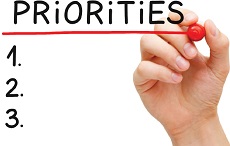
In any aspect of business, the ability to prioritize tasks and workloads is hugely important. When you are able to do this effectively, the most pressing tasks are completed without procrastination and maximum time and effort is invested into where it is most needed. This is no different when it comes to product design
Product design
Designing a product – the act of having an idea, making initial blueprints, creating a prototype, finalizing your creation and selling it on the market – has so many nuances and interweaving branches that it is remarkably difficult to know where to begin in order to finish where you desire.
For that reason, working as a team and using the correct software is essential to improving prioritisation and time management. Once these aspects have been treated with care, end results should follow more easily.
Mind mapping
To get your thoughts in order, use mind maps. They may appear scattered and disorganised to begin with, but they provide an important service: getting ideas and plans out of your head and onto a piece of paper. Not only that, but mind maps allow you and your colleagues to more effectively share ideas, while components of the mind map will trigger brand new, previously unthought of concepts.
This type of thinking opens your product design process up to being ordered, once mapped out in an initially scattered form.
Product management
To effectively prioritize, consider using product management tools to organise your team and set out schedules and “to do” lists. A fantastic tool for product management should allow efficient idea capturing so that no part of brainstorming is lost, while tasks are managed and ordered to improve the product development stage.
These tools will also help you with customer feedback which can be harnessed to further improve your product.
Be ruthless
A brutal but effective method for aiding prioritization in a product design environment is to be ruthless. While no idea is a bad one, and it is important to hold some variations in reserve, you should not waste time contemplating designs and evolutions of your product that you are not happy with. If something goes against your brand, doesn’t sit right in your heart or is simply not good enough, scrap it and focus on the stronger components and assets that you do have.
Remove distractions
In order to use your time effectively and properly prioritize the tasks you need to when designing a new product, attempt to reduce distractions in the workplace. Distractions provide members of staff with reasons to procrastinate and get dragged away from the task at hand. Prioritizing amongst tasks which are of varying degrees of importance is difficult enough without adding completely unessential work into the fray.
Know your audience
Finally, know and understand the audience that you are creating the product for. Once you have recognised this, you will be able to better focus and refine your designing and creative efforts in order to get the end result that not only you, but also your future investors, crave.






